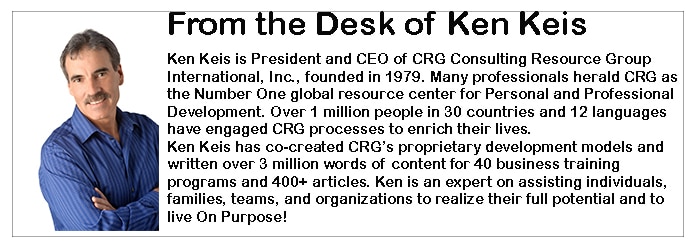Ultimate Guide to the Business Card

With people connecting instantly by Facebook, LinkedIN and Twitter and searching for contacts and business through Google search, you would think there wouldn’t be a need for business cards.
However people still want to meet face to face. There will always be a need to interact personally because first impressions of a person can not be read over the internet. In the end, whether you will trust and do business with someone can only be ultimately done face to face and business cards reflect who you are and what is your business if you get business card design done right.
In this ultimate guide to the business card, we will look at:
1. The History of the business card.
2. What is the psychology behind networking with business cards.
3. What are some of the guidelines for the best business card design.
4. What is some of the new, innovative designs in business cards.
The History of the Business Card
Before business cards there were calling cards. As early as the 15th century, calling cards (called Meishi) were in common use in China. Meishi were sent to communicate your intention to meet with someone. They also doubled up as a form of personal identification to gain access to private homes or exclusive events.
In 17th century, under the reign of Louis XIV, ‘Viste Bielets’ gained popularity amongst French aristocracy. A calling card was sent, servant to servant, to announce the impending arrival of a particularly big wig.
from A brief history of the business card
Victorian Calling Card
Around the same time, trade cards were becoming popular, and were used by the merchant class in London. Businessmen would engrave them with information, like maps to their stores, and hand them out as advertising before or after a trade. Colour printing and elaborate designs helped the tradesmen stand out, and became an early example of brand identity according to A Short History of the Business Card.
In the 20th century, the business card developed from the calling card to be a standard size card of 2″ high x 3 1/2″ long with information about your business, your authority status (your university degrees) or your status within a business (last name, senior vice president) so it could fit into a Rolodex and kept for reference to contact a person at a later date.
 http://creativecommons.org/licenses/by-sa/3.0
http://creativecommons.org/licenses/by-sa/3.0
The Rolodex, invented in 1956, was an improvement to an earlier design called Wheeldex.
 Creative Commons 2.0 license, by CALoynd
Creative Commons 2.0 license, by CALoynd
In order for business cards to fit into the standard Rolodex, they had to be the standard size. So, the only way to make your business card standout was through colour, text, taglines or quality of paper.
I remember reading the first Guerilla Marketing book by Jay Conrad Levinson in 1984 and the use and distribution of your business card wherever you are and whatver you are doing was a core guerilla marketing technique.
Guerilla techniques included making your business card standout by not making it 2″ x 3 1/2″ or making it out of unusual materials like wood or sheetmetal so people would keep your business card even though it didn’t fit within your Rolodex.

https://www.flickr.com/photos/popupology/5709880151/
https://creativecommons.org/licenses/by-nc-sa/2.0/
Now the business card is a talking point when you meet another person. You’ll never forget the 3-D paper pop up business card at http://www.foldform.co.uk.

https://www.flickr.com/photos/ranh/106709219
https://creativecommons.org/licenses/by/2.0/
Kevin Mitnick of www.mitnicksecurity.com has unique business card tool that is made of metal and when taken apart, it can be used as a lock pick!
Now with the internet, people say the use of the business card is not needed with the instant connections we can make on Twitter, Facebook, Linkedin and Googleplus. However, according to Statistics Brain there are 27 Billion business cards worldwide printed daily. There is a 2.5% increase in sales for every 2000 business cards passed out in statistics given.
What is the psychology behind networking with business cards
So, why are business cards still being used in business?
Authority
They are being more for one on one meetings between business people. What you say about your business and yourself is important on your business card. Listing your university degrees or your level of your authority in the business needs to be recognized on your business card. It is a simple way to show your experience and authority in your business.
Brand
The business card is a simple, inexpensive way to show what your brand is all about. It represents you when you meet someone new. Whether you use thin paper or heavy quality watermarked paper will affect how people perceive you when they don’t know you. Your mission or your tag line for your business can speak to people as to who you are if it is on your business card.
Trust-building
According to Business Insider the business card is being used to build trust among business people especially in the Asian countries.
They can be a quick way of establishing connections, particularly in Asia, where they are something of an obsession. The Chinese are following the Japanese in treating them as semi-sacred objects. Some businessmen hand out 24-carat gold cards. Nursery-school children sometimes carry cards not only with their own contact details, but also with the job descriptions of their parents and even grandparents.
My husband went on business to Japan and he had business cards made in the Japanese language as well as English. He knew there was a presentation etiquette for meeting the senior Japanese CEO and he did remember to present his business card face up and he even remembered to look at the Japanese businessman and nod in appreciation however he then put it in his back pocket.
Exchanging business cards is not just a way of sparking a conversation. It is a way of placing people correctly in the pecking-order without the embarrassment of asking them their formal title. As “wearables” go, this is a killer app according to Business Insider.
Business Card Strategy
Now when I heard this from Gina Gaudio Graves at www.directionsuniversity.com, I was blown away as I never thought that a business card could be a strategy! Gina brings boxes of her business cards to any conference she is in. She has a unique business card just for these events with the standard information on the front and on the back there is the word “Notes” and some lines imprinted. Now anyone else would use this business card to take notes during a presentation on the back of the business card. Gina sees people who are struggling to find paper to write down notes so she will chat with them and hand them several business cards or even boxes of her business card for them to use to take their notes or write down the connections they are making during the conference to remember those peoples email address and phone numbers. These people will then take home her business cards with all their notes and email addresses from their connections that they will keep so she is spreading awareness about her business by helping other people making their connections. Awesome!
What are some of the guidelines for the best business card design?
Think about what is the outcome for your business card before you design it.
Do you want to make a lasting first impression with a new client?
Do you want to spread your business card here and there to advertise your business?
Do you want it to be your “Calling Card” ?
If you look at the outcome of using your business cards that will help you decide. Though as www.medianovak.com mentions here…..
Do try to keep the design of your cards clean and simple, and avoid visual overload or clutter at all costs. Consider using the back of the card or create a folded business card if you need more space for additional information. However, make sure you keep the practicality of your card in mind. How often will people see the back of your business card? from Business Card Design Essentials | 5 Things You Have To …
If you want a business card idea you will never forget, go check out this one at Clever Business Card Features A ‘Striking’ Surface, Lets You Start A Fire
To create a lasting impression for their new company, Canadian event agency Wildfire Experiential and Events included a clever feature in their business cards that lets you start a fire. Designed by Vancouver-based integrated marketing firm Cossette, the new visual brand identity was based on a simple design brief: “Spark conversation.”
Just way-out there business cards that are memorable but do they really reflect that person’s business at The 31 Greatest Business Cards In The History Of All Business
The infographic from AllBusinessCard below is a great summary of what to consider for your business card….













